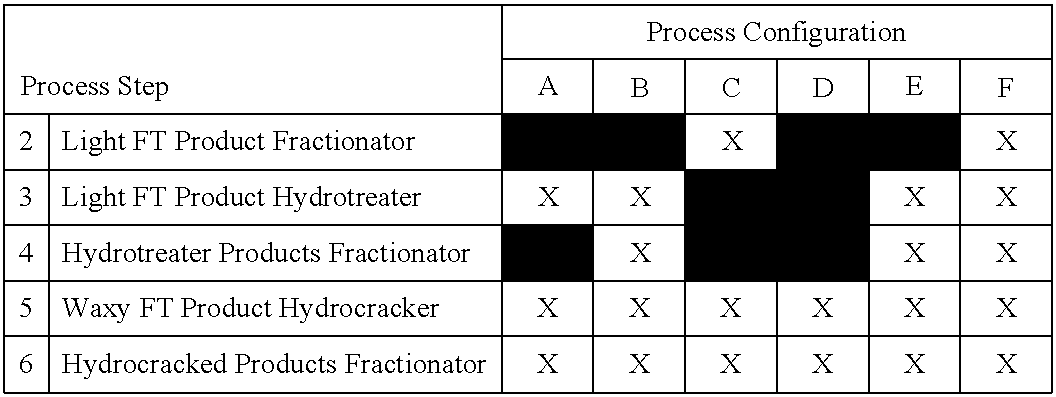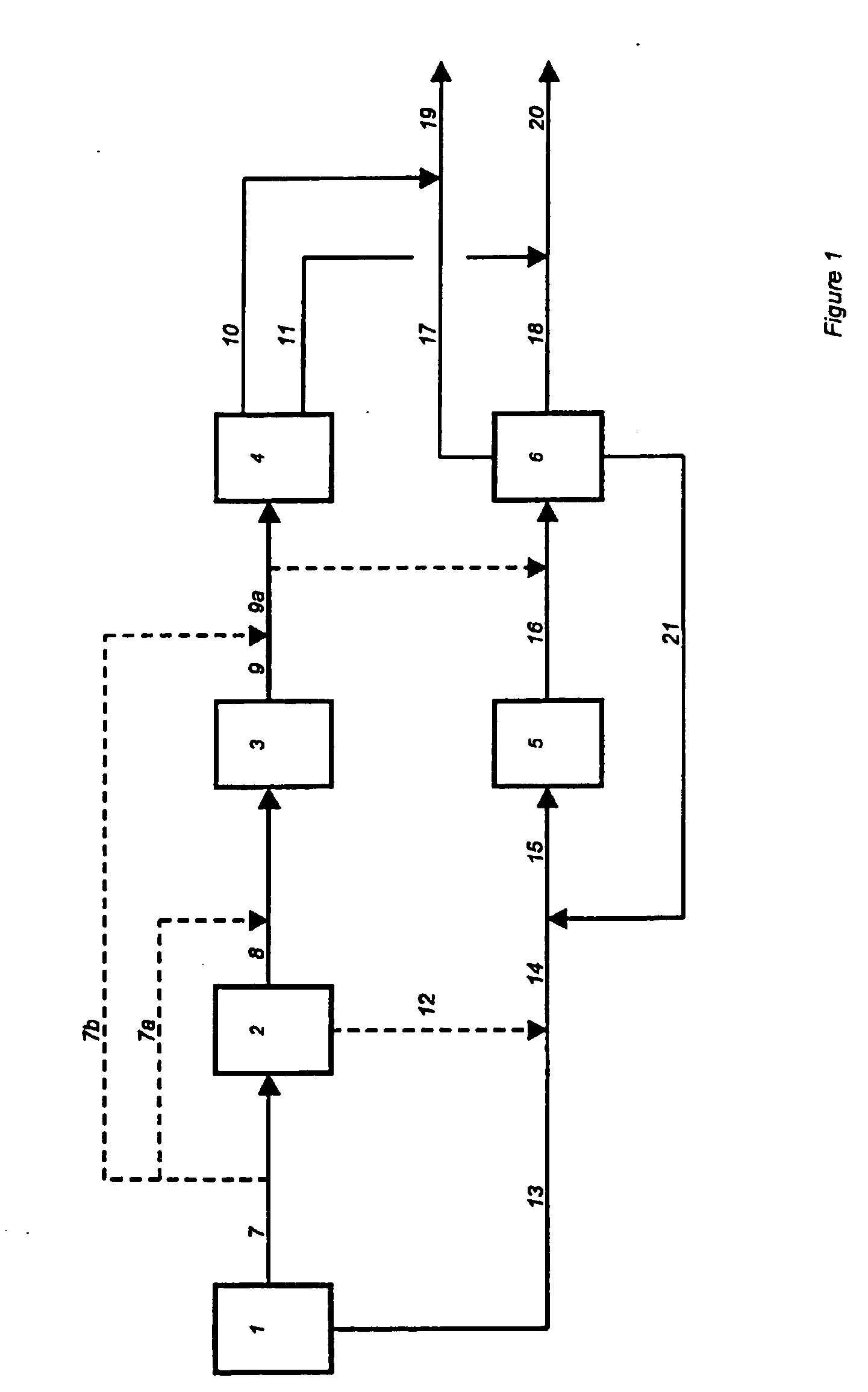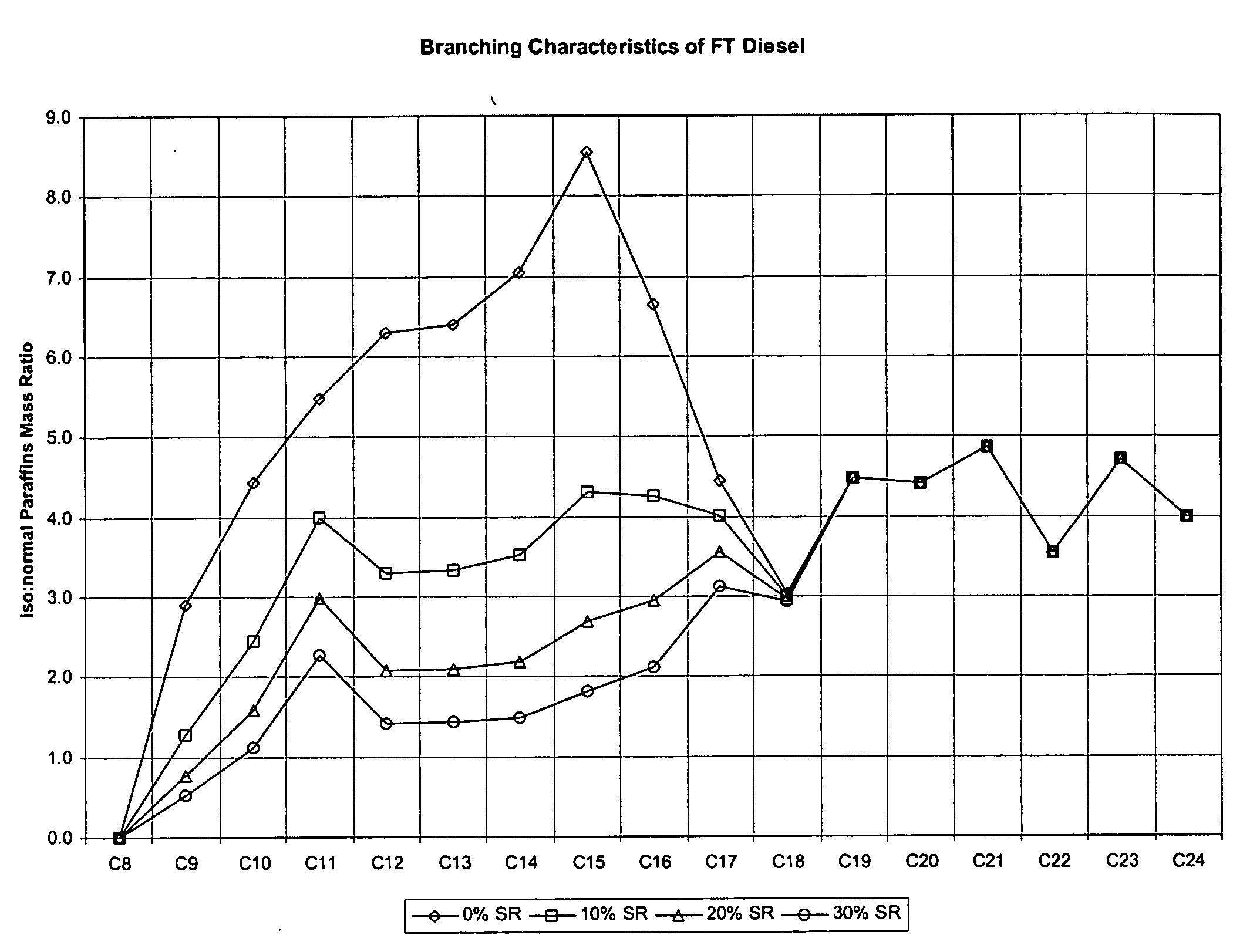Production of biodegradable middle distillates
a technology of biodegradable distillates and distillates, which is applied in the production of liquid carbonaceous fuels, hydrocarbon oil treatment, liquid hydrocarbon mixtures, etc., can solve the problems of not meeting the biodegradability requirements of distillates, biodegradability tests, and crude oil derived diesel fuels
- Summary
- Abstract
- Description
- Claims
- Application Information
AI Technical Summary
Benefits of technology
Problems solved by technology
Method used
Image
Examples
example 1
[0088] Fuel S1 was produced broadly in accordance with the invention, by following the process described above. It is a fully hydroprocessed fuel. The fractionation of the two basic components was completed in separate steps. S1 diesel was a blend of 84% (vol) of hydrocracked diesel (product stream 11 from fractionator 4) and 16% (vol) of hydrotreated diesel (product stream 18 from fractionator 6) produced using configuration B of Table 5. It contained 2.68% total aromatics, most of the aromatics species being monocyclic.
[0089] This fuel biodegraded 61% after 28 days under the conditions specified for the described modified Sturm OECD Method 301 B. A fuel with this behaviour is considered biodegradable.
example 2
[0090] Fuel S2 was produced by hydrocracking of the FT wax and distilling the diesel fraction (product stream 18). The primary light FT products were distilled separately (product stream 11 produced without passing through hydrotreater 3). S2 diesel was obtained by blending these two cuts in a 84:16 ratio (volume). Process Configuration C of Table 5 was used to produce this fuel. The total aromatics content was 2.46%.
[0091] This fuel biodegraded 63% after 28 days under the same conditions described in example 1. This fuel can also be considered biodegradable.
example 3
[0092] Fuel P1 is a commercial diesel procured in the United States of America. It meets the US 2D diesel specification. This conventional petroleum based diesel fuel contained 38.22% aromatics, almost 71% of which were monocyclic species.
[0093] This fuel biodegraded 34% under the conditions described in example 1. A fuel with this behaviour is not considered biodegradable.
PUM
 Login to View More
Login to View More Abstract
Description
Claims
Application Information
 Login to View More
Login to View More - R&D
- Intellectual Property
- Life Sciences
- Materials
- Tech Scout
- Unparalleled Data Quality
- Higher Quality Content
- 60% Fewer Hallucinations
Browse by: Latest US Patents, China's latest patents, Technical Efficacy Thesaurus, Application Domain, Technology Topic, Popular Technical Reports.
© 2025 PatSnap. All rights reserved.Legal|Privacy policy|Modern Slavery Act Transparency Statement|Sitemap|About US| Contact US: help@patsnap.com



